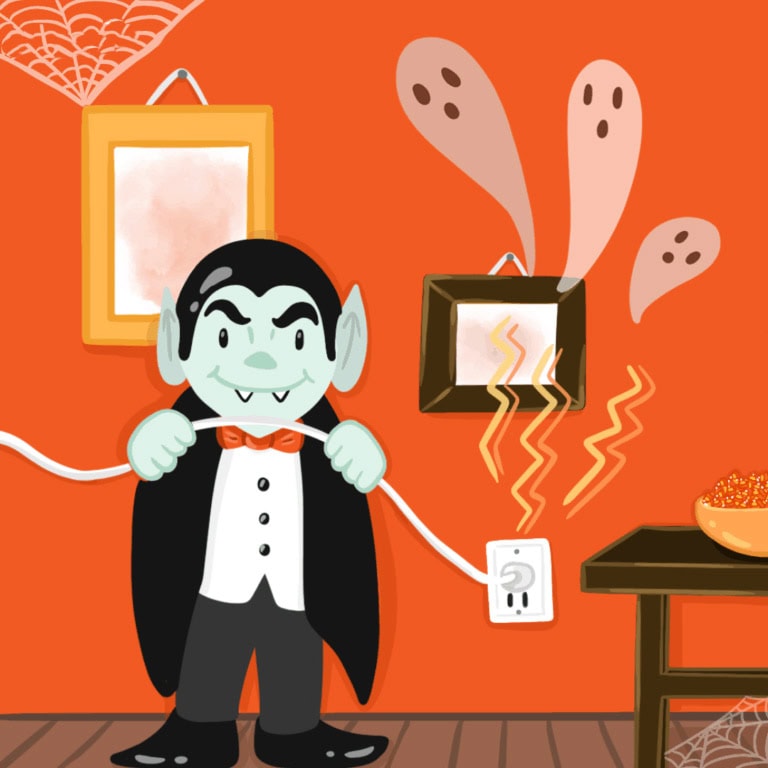 Vampire power, often called ghost electricity, standby power, or idle current, is energy wasted by devices not in use or even turned on. Unused devices left plugged into your wall outlet often contribute to higher electric bills. Today, households have innumerable electronics and devices, making it hard to escape high electric bills. With rising electricity prices, especially here in Massachusetts and the rest of New England, there’s no need to throw away any more money on unnecessary costs. The frightening truth is that vampire power makes up approximately 10% of all residential energy consumption. To put that in more practical terms, this equates to nearly $4 billion in wasted energy annually. On the bright side, eliminating vampire power is much less daunting than its spooky name suggests.
Vampire power, often called ghost electricity, standby power, or idle current, is energy wasted by devices not in use or even turned on. Unused devices left plugged into your wall outlet often contribute to higher electric bills. Today, households have innumerable electronics and devices, making it hard to escape high electric bills. With rising electricity prices, especially here in Massachusetts and the rest of New England, there’s no need to throw away any more money on unnecessary costs. The frightening truth is that vampire power makes up approximately 10% of all residential energy consumption. To put that in more practical terms, this equates to nearly $4 billion in wasted energy annually. On the bright side, eliminating vampire power is much less daunting than its spooky name suggests.
Eliminating unnecessary ghost electricity will benefit your wallet, the environment, and even the lifespan of some of your devices. Not to mention, these solutions are incredibly simple and quick fixes that anybody can fit into their busy routine. Below are five easy tips for reducing phantom power in your home.
1. Unplugging Appliances and Devices
Phone chargers are a common source of ghost electricity. Have you ever come home to a plugged-in charger that felt warm while not in use? That’s because electricity is still flowing through your cords even when disconnected from your devices.
A single charger may only cost $4.25 in ghost electricity per year, but this quickly adds up when you consider how many charging cords are used in your home every day. On average, an individual owns ten electronic devices, up to forty devices and chargers in a four-person household. While it’s important to unplug a phone charger when you’re not using it, it’s equally important to pay attention to your phone while it’s charging.
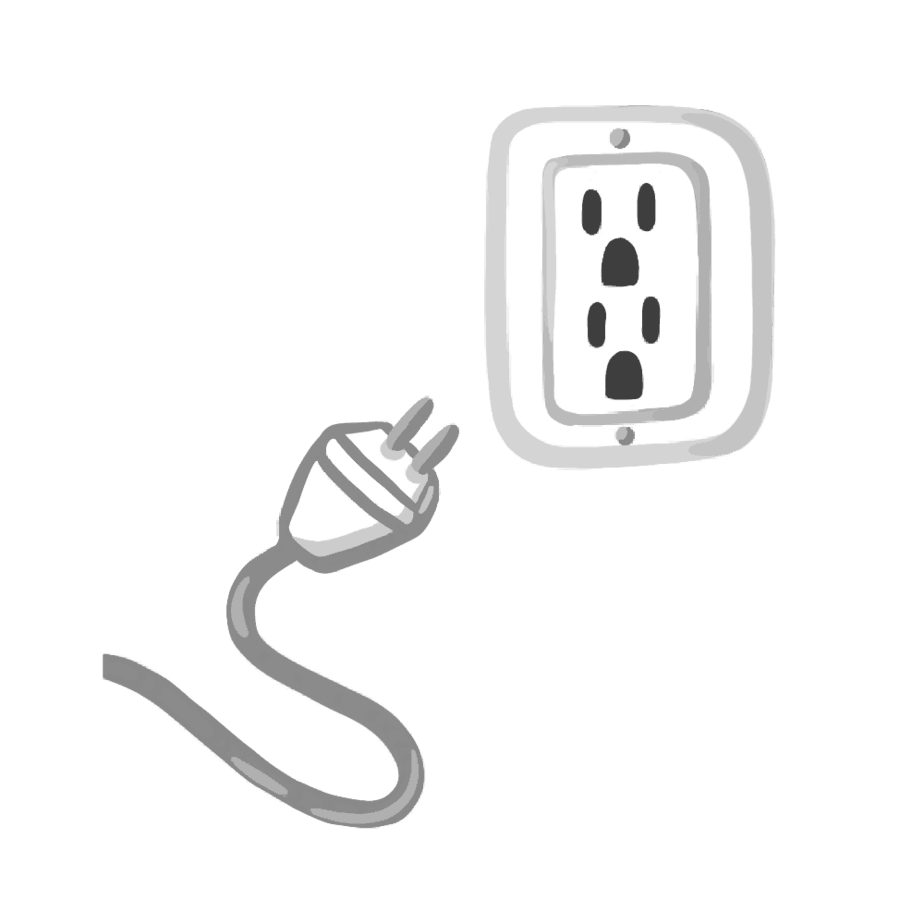
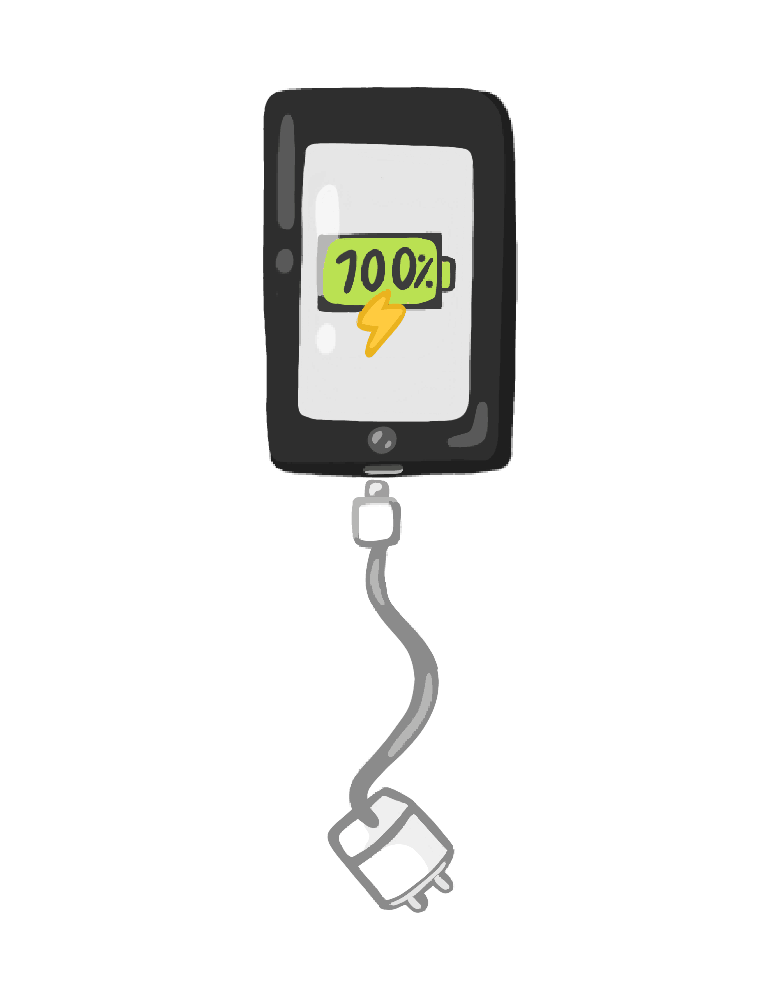 In addition to chargers, any type of plug-in device can produce vampire power. These include kitchen appliances like blenders, toasters, and even dehumidifiers. Any device with a cord should be unplugged when not in use to prevent phantom power from haunting your home.
In addition to chargers, any type of plug-in device can produce vampire power. These include kitchen appliances like blenders, toasters, and even dehumidifiers. Any device with a cord should be unplugged when not in use to prevent phantom power from haunting your home.If a phone, or any other chargeable device, reaches full battery, it’s important to unplug immediately. Even if your phone shows a full charge, it will continue to use electricity as long as it’s plugged in. This is detrimental to your phone battery as well as your electric bill, as an overcharged phone causes overall reduced battery life.
To help you remember to unplug, many smartphones allow for a pop-up notification when it reaches optimal charge. This is a great way to keep your battery functioning to its highest potential while fighting off vampire power.
2. Stand-by Mode
Another pesky source of vampire power is in standby mode, or the “sleep” function. Many devices, such as printers or computers, come with the option to go into a power-saving mode without completely shutting the device down.
While this setting can be appealing for those who don’t want to wait for electronics to boot up, it can cost you financially. Since your computer is only partially turned off when in sleep mode, it’s still consuming electricity without performing any real function. Turning devices completely off after use can reduce your phantom power consumption and even save you some money on your electric bill each month.

3. Smart Strips
While unplugging a single charger or turning off a laptop can be a simple fix, what about those larger electronics that are inconvenient to unplug? Entertainment systems that include sound systems, DVD players, and even video game consoles, can seem daunting to unplug regularly. At the same time, they’re one of the biggest offenders when it comes to ghost electricity, costing between $75 and $160 per year in passive energy consumption alone.
Smart home devices are a great solution for these pesky phantoms. Unlike a typical power strip, smart strips prevent the flow of electricity to devices when not in use. This is ideal for large, multi-device systems since all devices can be easily plugged into one strip.
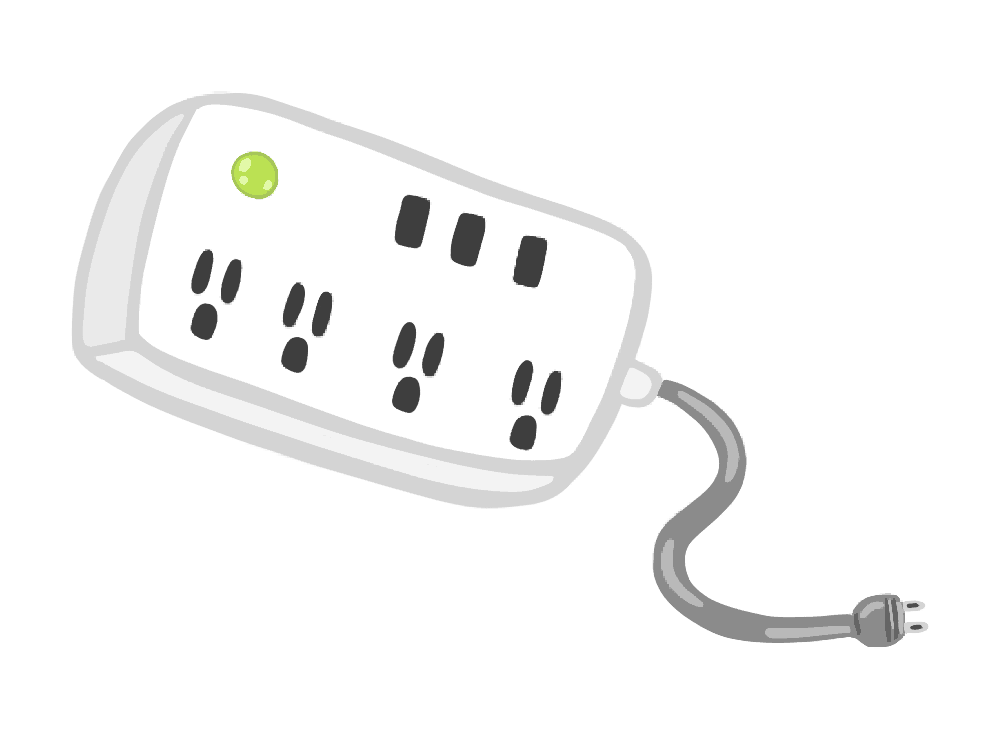
4. Smart Plugs
Monitoring your electronics and unplugging them to save power while you are home is great, but what if you are busy at work and not at home?
Investing in smart plugs can allow you to control power remotely and schedule devices to turn off at specific times during the day. These smart plugs are typically offered with an integrated app so you know exactly when your energy is being used. Compatible with devices like Amazon Alexa, Apple Homekit, and Google Assistant, there is no need to worry about integration. This easy, affordable option will keep vampire energy at bay while you aren’t home.
5. Energy Saving For Gamers
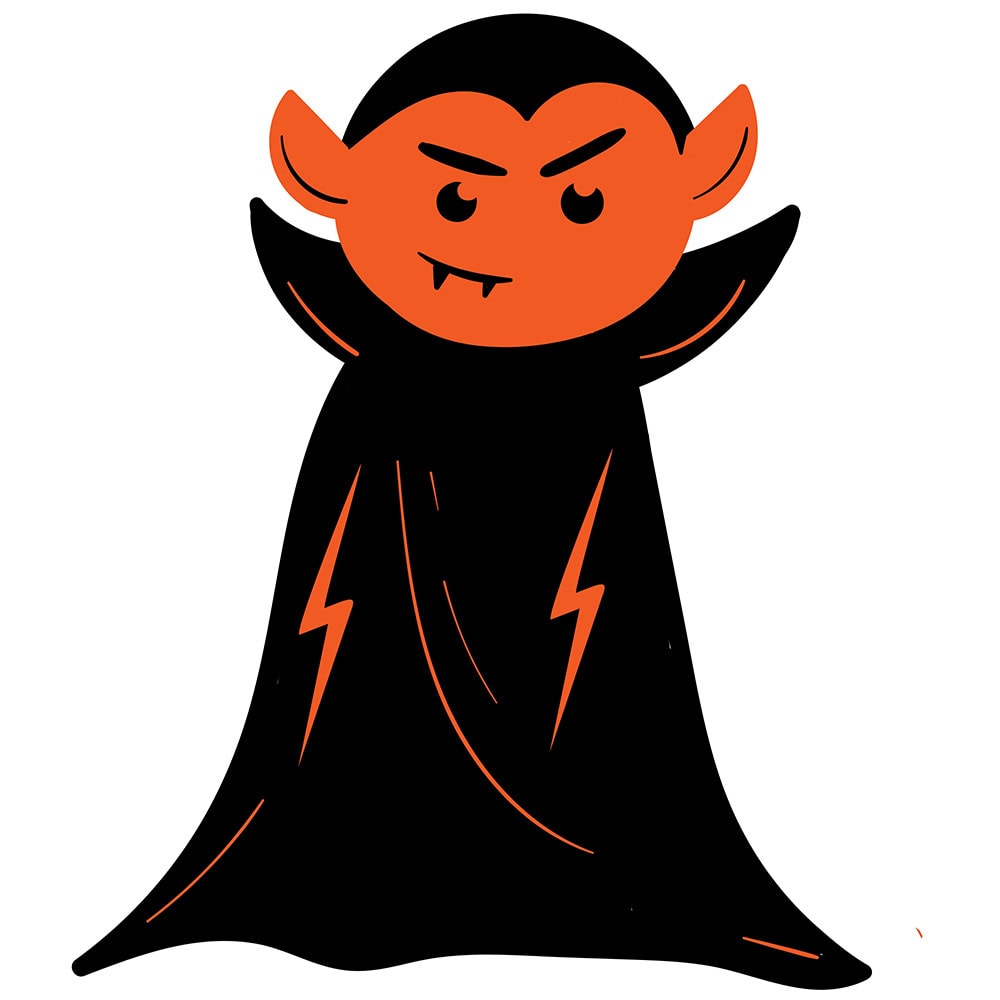 Gaming is one of the most common pastimes in the world. However, it can consume massive amounts of energy. Gaming systems consume $6 billion worth of electricity every year.
Gaming is one of the most common pastimes in the world. However, it can consume massive amounts of energy. Gaming systems consume $6 billion worth of electricity every year.
Using energy saving modes on modern gaming consoles like the Xbox series X and the PlayStation 5 will instantly reduce the amount of ghost electricity produced in your home. By enabling this setting, the console will power off after being unattended for a certain period. This change will reduce up to 98% of phantom power produced annually. Remember that these devices are typically preset to the same “Sleep mode” described above, so navigate to the power settings upon purchase for ultimate energy preservation.
Conclusion
As we approach the eerie season of ghosts and ghouls, don’t let phantom power haunt your home! With the simple tricks explained above, you can banish those energy-sucking vampires once and for all. Not only will you keep your electric bill from creeping up, but you’ll also play your part in helping the environment!